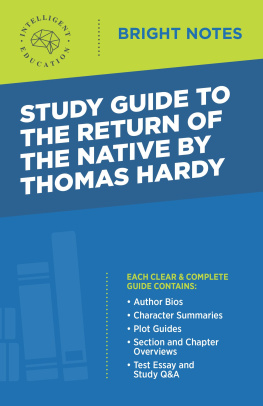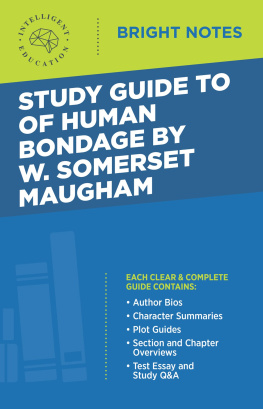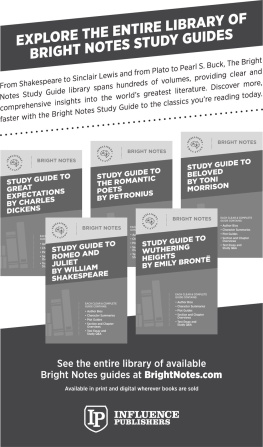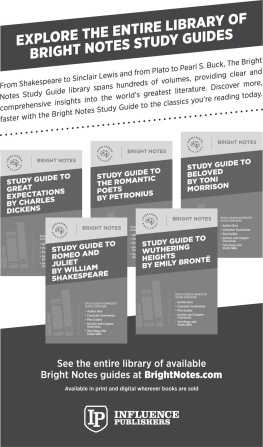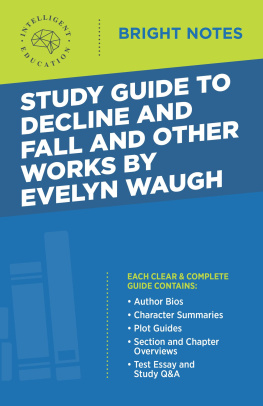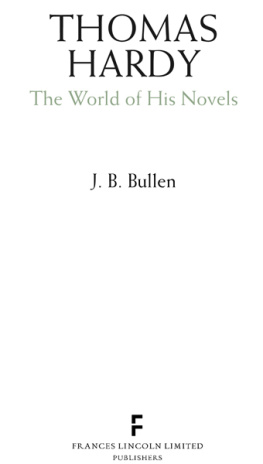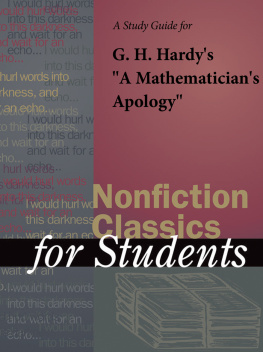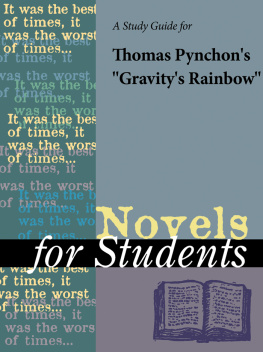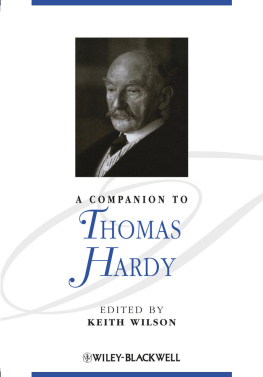
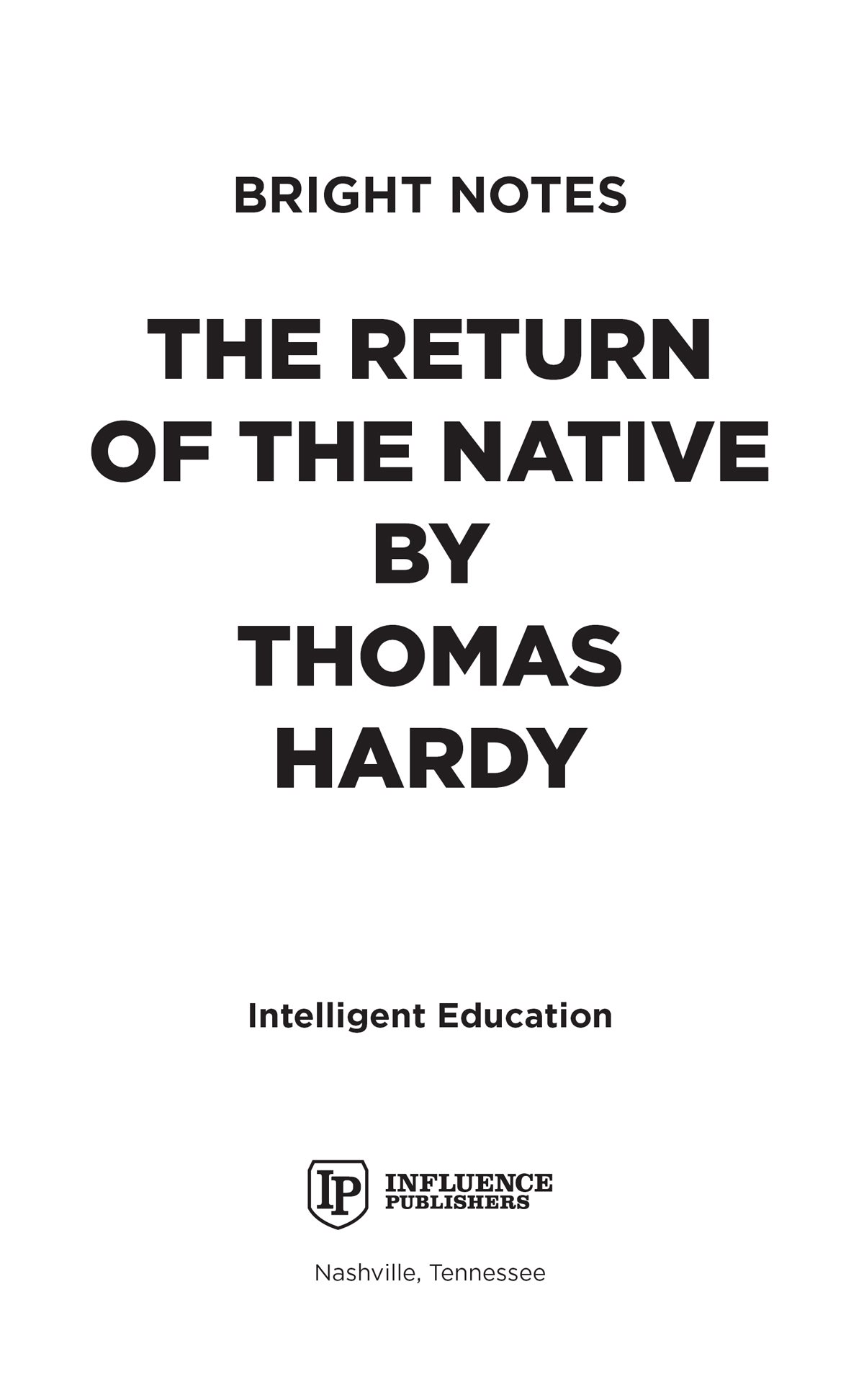
BRIGHT NOTES: The Return of the Native
www.BrightNotes.com
No part of this publication may be used or reproduced in any manner whatsoever without written permission, except in the case of brief quotations in critical articles and reviews. For permissions, contact Influence Publishers http://www.influencepublishers.com
ISBN: 978-1-645424-92-5 (Paperback)
ISBN: 978-1-645424-93-2 (eBook)
Published in accordance with the U.S. Copyright Office Orphan Works and Mass Digitization report of the register of copyrights, June 2015.
Originally published by Monarch Press.
Charles L. Leavitt; Emily S. Leavitt, 1964
2019 Edition published by Influence Publishers.
Interior design by Lapiz Digital Services. Cover Design by Thinkpen Designs.
Printed in the United States of America.
Library of Congress Cataloging-in-Publication Data forthcoming.
Names: Intelligent Education
Title: BRIGHT NOTES: The Return of the Native
Subject: STU004000 STUDY AIDS / Book Notes
CONTENTS

INTRODUCTION TO THOMAS HARDY
HARDYS BIRTH AND PARENTAGE
Thomas Hardy was born in Upper Bockhampton, Dorsetshire, England, on June 2, 1840. His father was known then as a master builder (today we would call him a contractor) who employed up to ten or twelve men on his buildings. Hardys mother came of a family long established in Dorset as cultivators of the land. Ernest Brennecke in his Life of Thomas Hardy says she was ambitious in a literary way; her interests included the classical Latin poets, Virgil, French romances and tragedies. From her Hardy developed his love of reading. It was she who arranged what formal education Hardy received: first the village school; then her own tutoring in Latin; then a French governess for a year. Thereafter Hardy was his own tutor, teaching himself Greek, and reading eagerly and thoughtfully.
YOUTH
In 1856 Hardy, ages sixteen, was apprenticed to a Dorchester architect, whom he helped in the restoration of old churches. In 1862, at twenty-two, he went to London to work in another architects office. He won a prize for an essay, The Application of Coloured Bricks and Terra Cotta in Modern Architecture. During his time in London Hardy attended night classes offered by Kings College. In his spare time he wrote poetry. He spent much time at concerts and in the art museums. Hardy endured London for five years before he returned to Dorset in 1867 to work for the same architect who had apprenticed him.
LATER YEARS
Through his work on restoring a church in Cornwall, Hardy met the church organist, Emma Lavinia Gifford, whom he married in 1874. During their early married years, after a honeymoon in Paris and Belgium, they lived in Dorset, London, and at times in a Paris flat. Although her preferred writing poetry, he turned to writing novels as a means of earning money. His novels were first published in installments in popular magazines. Between 1883 and 1885 he built, near Dorchester, his own home which he called Max Gate. In 1912 the first Mrs. rarely moved from his beloved Wessex country. In 1912 the first Mrs. Hardy died. In 1914 Hardy married his secretary, Florence Emily Dugdale. She was a writer herself, and after Hardys death, in 1928, she devoted her time to assembling his biography from his papers and her own reminiscences. Her Life of Thomas Hardy was first published in 1933.
HARDYS PERSONALITY
Albert Guerard, a noted critic, speaks of Hardy as having the tenderness of a Saint Francis toward children, animals, and all unfortunates, Katherine Anne Porter, in an essay in Modern Literary Criticism , says that Hardy was painfully sensitive to what he believed to be a universal pervasiveness of needless misery for humans and animals. All his life he suffered underlying selfless discomfort for the suffering of all animate beings. H. M. Tomlinson, in an essay in The Saturday Review Gallery , believes that the only thing that could arouse Hardys anger was cruelty to humble and insignificant people or to animals. His greatness lay in simple, modest thoughts and concerns. He liked to talk of nature, the birds and the signs of the weather; he liked to ramble on about the village inns and the characters who frequented them. The little things of life interested him for he was a man of simple tastes and habits.
LITERARY CAREER
At the outset of his book on Hardy, Henry Duffin gives a chronology and classification of Hardys literary works. Hardy began writing as a poet and ended writing as a poet. Poetry was his favorite means of expression; but writing poetry did not provide a livelihood; so he turned to writing popular novels.
Hardy wrote fourteen Wessex novels between 1871 and 1895. The Return of the Native (1878) is the sixth of those novels. Hardy classified his fiction as: Novels of Character and Environment; Romances and Fantasies; Novels of Ingenuity and Experiment. The Return of the Native he called a Novel of Character and Environment. Mr. Duffin suggests another classification - Tragedies, Tragi-comedies, Comedies - and lists The Return of the Native as a Tragedy.
The last of the Wessex novels, Jude the Obscure , published in 1895, created such a furor in ecclesiastical circles that Hardy, a devout churchman, gave up writing novels and returned to his first love, poetry. The dates of the poetry volumes range from 1898 to his death in 1928.
Critics differ as to which of Hardys novels is his greatest: The Return of the Native , Tess of the DUrbervilles , or Jude the Obscure . From the number of editions of The Return of the Native now published, it seems that this novel is the most popular at the present time.
WESSEX COUNTRY
Historically, Wessex was one of the kingdoms of Anglo-Saxon Britain. Geographically, it first included what are now the counties of Dorset, Somerset, and Devon; later it annexed what are now Surrey, Kent, Sussex, and Essex. The Wessex of Hardys novels encompasses Dorsetshire, Hampshire, and Wiltshire. On the map it describes a semi-circle southward with Oxford as the northernmost point.
Ernest Brennecke, in his biography, says that Hardy looked upon the heath country of Wessex as if it were a great stage upon which nature buffeted the animate and inanimate about in comedies and tragedies dependent upon the sum of all the long past actions of history as well as upon the present unpredictable moods of weather and vast solitude. Albert Guerard enumerates the important Wessex virtues as fidelity, simplicity, endurance, and tolerance. Wessex contains heath country unchanged over the centuries since the Romans buried their dead in the huge earthworks now known as barrows. Guerard calls Hardy the Wessex historian and further notes that Hardys rural characters are really not of the nineteenth century, but are characters out of Wessex history which they help to keep alive.
In his childhood, Hardy made his playground on the heath; his playmates were heath children. He learned early to talk the heath dialect, although in his home he was not allowed to use it. That his heart and soul were firmly attached to the Wessex country is shown by Max Gate, the home he built on the edge of the heath and rarely left. H. M. Tomlinson visited Hardy at Max Gate and writes of the place in an essay. Max Gate, near Dorchester, is like an island walled by trees from the vast expanse of Egdon Heath. The house is completely hidden from the road. Hardy probably planted the screen of trees to protect his cherished privacy. One could walk across the fields from the town and feel the dark mood of the brooding hill beyond fields of corn. Maiden Castle, an ancient Celtic earthwork or hillfort formed by men long before the Romans came, rises in the distance. Dorchester church with its square tower, and the chimneys of the town seem to float over the treetops which rise from the depression below the height of the town. This is real Hardy country, and you feel you must be about to meet the man himself, no matter which path you take.
Next page
